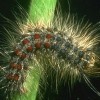Archive for January, 2012

Catching the Flu: Between Complacency and Fear
Jan 25th
It is “flu season” again and people are being vaccinated against the seasonal flu. But how do these vaccines work and why do we have to get a new one every year?
And how does this relate to the issue of scientific publishing and biosecurity? Read on…
Flu – or influenza – is a serious respiratory illness (not to be confused with common cold) caused by the influenza A and B viruses. Influenza claims a death toll of about 250,000 to 500,000 people worldwide every year. Medical advances have helped understand and combat one of history’s worst killers. From 1918 to 2012 More >

Tag…You’re It!
Jan 19th
Classic genetics alone is unable to explain the diversity we see within a population of living things. This also cannot explain how identical twins with the same DNA sequences can have differences in their traits and development of disease. First introduced in 1939 by C.H. Waddington, epigenetics is now able to offer some explanation, as it studies the heritable changes in gene expression that are not due to any alteration in the DNA sequence.
This may help to answer many questions. How can we have so many different types of cells and they all carry the same genetic information? How is More >

Sterilization Laws
Jan 18th
Based on a task force recommendation, the North Carolina legislature is considering paying $50,000 to living individuals sterilized by the state against their will or without their knowledge. North Carolina reportedly sterilized 7,600 individuals between 1929 and 1974. However, other American states also passed laws legalizing sterilization; the first was passed in Indiana in 1907 with the intent of giving prison inmates vasectomies as a way to prevent the transmission of “degenerate traits.”
Date on which each State inaugurated its eugenical sterilization law (view in Eugenics Archive)
In 1914, eugenicist Harry Laughlin published a Model Eugenical Sterilization Law that proposed to authorize More >

Mapping the migratory patterns of……brain cancer cells?
Jan 18th
We’ve all watched fascinating David Attenborough documentaries about the migratory patterns of birds, sub-Saharan animals and butterflies, but cancer cells? Yes, cancer cells migrate too. More specifically, brain cancer cells.
Researchers have known for a while that not only are glioblastoma multiforme cells highly resistant to chemotherapy, but they can also deftly migrate away from sites of radiation or surgery, setting up camp and regrowing in other parts of the brain. This means that brain cancer is notoriously difficult to treat and the prognosis is almost always grim.
Last year the New York Times described Hanahan and Weinberg’s Hallmarks of Cancer as follows:
“Through a More >

Be nice to your plants, they might be sensing you
Jan 4th
Complex social behavior was considered to be unique in animals, especially humans. Now with recent findings, we may need to extend this ability to plants. The old wives tale, “if you talk to your plants, they will grow better” may actually have a string of truth to it. Except they don’t have ears to hear, they have chemical sensors in their roots, like “tongues in the earth.”
Recent studies have shown that plants seem to respond to other neighboring plants, and will alter their growth patterns accordingly. At McMaster University, Ontario Canada, Susan Dudley and Amanda File have demonstrated that plants More >

How a Virus Creates Zombie Insects
Jan 4th
Photograph courtesy of the USDA Forest Service via Wikimedia Commons.
Kelli Hoover and her research team from the Penn State have found out how a virus can change the behavior of a host organism. The result is destructive for the gypsy moth but excellent for the virus.
Gypsy moths are an invasive species. In its larval stage caterpillars damage roughly a million acres of forest in the U.S. each year by feeding on tree leaves. But the damage would be greater if it weren’t for a pathogen called baculovirus that infects these caterpillars and causes them effectively to engage in suicidal More >

Traveling Genomes
Jan 3rd
Many individuals are concerned with the dietary components of foods they consume. However, scientists from Nanjing University in China have given us a different perspective as to what we eat, they have discovered fragments of genetic material known as microRNAs making their way from vegetables into the human bloodstream.” (Stanley 2011)
MicroRNAs are found abundantly in humans and regulate gene activity through repression mechanisms. But to find microRNAs from plants still thriving post digestion was quite surprising. Even more shocking it was identified that fragments of these plant genomes come with consequences. Scientists revealed one such microRNA molecule, called MIR168a—which is More >

